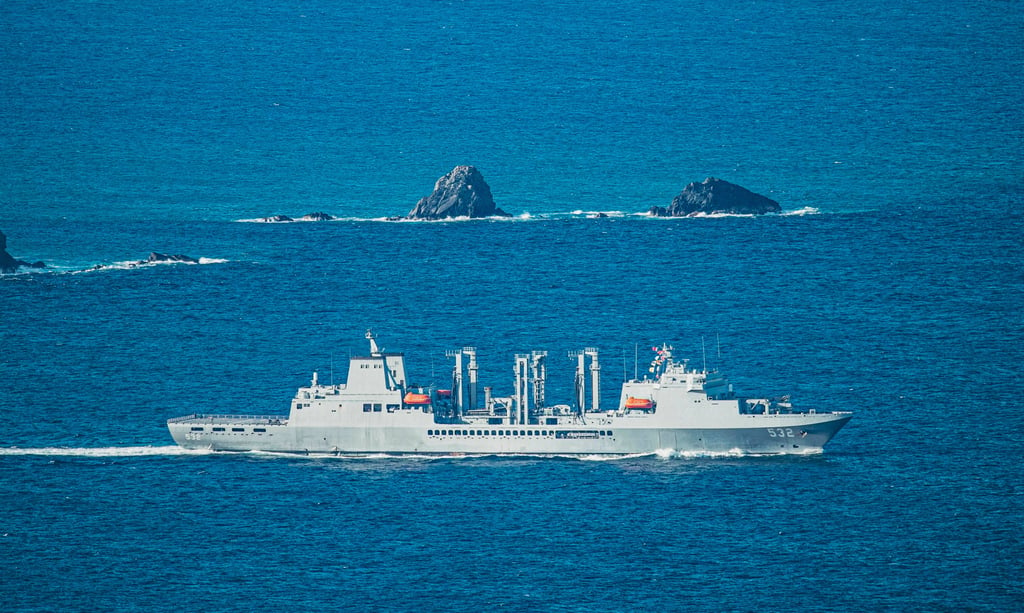“These [real-life battlefield] scenarios guide officers and soldiers to validate through exercises the feasibility of joint operation plans and the ability of all military units to execute these plans in a real combat situation,” the ministry said in an earlier statement.
This is also the first Han Kuang exercise since William Lai Ching-te – branded by Beijing as an “obstinate separatist” – took office as Taiwanese leader in May.
At least two regular features have been cancelled for this year’s exercise.
There will be no exhibition drills staged for the island’s leaders, and no live-ammunition exercises in the island proper.
Monday’s drills tested how far the military could sustain and preserve its combat power in the event of a full-scale PLA attack.
Dozens of warplanes based in western Taiwan took off on Monday morning for the underground Jiashan base in the eastern county of Hualien and the nearby Chihang base in Taitung county, according to the ministry.
The planes included F-16 fighter jets, Indigenous Defence Fighters, Mirage-2000 fighters, as well as P3C anti-submarine and E2K early warning aircraft.
With western Taiwan just a short hop from the mainland Chinese coast, fighter jets based there are seen as more vulnerable to direct cross-strait strikes. Sending them to the east would help to preserve forces for a counterstrike, defence ministry officials said.

Later in the day, troops also practised defending the capital Taipei and preventing the key political and financial hub from being bombarded in the event of a PLA “decapitation” strike aimed at wiping out the top leadership or command centre.
A major area of focus this time is information systems competence, including troop response to loss of contact with central command, according to Admiral Mei Chia-shu, the chief of general staff.
Mei said the drills would also test how well soldiers from different units were able to independently implement rules of engagement in combat situations where communication with higher command is disrupted or cut off.
The largest war games of the year are being held in conjunction with the annual Wan An air raid drills, which simulate missile and warplane attacks from the PLA.
On Monday, vehicles and pedestrians were taken off the streets for 30 minutes as the four-day drills took off, with people asked to stay indoors or move to local air raid shelters.
Beijing sees Taiwan as part of China, to be reunited by force if necessary. Like most countries, the United States does not recognise Taiwan as independent but opposes any attempt to take the island by force and is legally bound to supplying it with defensive weapons.
Cross-strait relations have worsened since Lai, of the independence-leaning Democratic Progressive Party, was elected in January. Beijing labelled the result of the vote as “unacceptable”, warning that his leadership would bring war to Taiwan.
In response, Beijing launched large-scale military drills around Taiwan, simulating a blockade.

